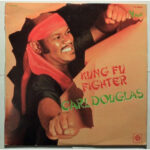Have you ever wondered if there’s a magic formula to instantly bring joy to your baby’s face? It turns out, someone has tried to find it, and the result is quite fascinating – and perhaps a little unnerving. The “Happy Song,” crafted by the talented Imogen Heap, wasn’t born from artistic inspiration alone. It was scientifically engineered to elicit happiness in babies.
The story behind this unique piece of music began with the London advertising agency BETC, tasked by baby food giant Cow & Gate to create something special. Their goal wasn’t just to write a catchy jingle, but to compose “the world’s first song scientifically proven to make babies happy.” To achieve this ambitious goal, they embarked on a month-long research project, collaborating with developmental and musical psychologists. They asked parents in the UK about the sounds that delighted their little ones the most. Horns beeping, bells ringing, and cats meowing emerged as top contenders.
These sounds weren’t just chosen arbitrarily. The agency rigorously tested recordings of these popular sounds on babies, meticulously monitoring their heart rates, facial expressions, and vocalizations. Imagine scientists poring over data from heart monitors attached to infants, all in the name of musical composition! This detailed research provided the blueprint for Imogen Heap, a Grammy Award-winning artist known for her innovative electronic music and vocal prowess. She took the research findings and skillfully wove together these scientifically-validated sounds into a cohesive and, indeed, happy-sounding song. The final product incorporates beeping horns, ringing bells, meowing cats, and other sounds deemed most captivating to babies.
This level of calculated creation inevitably brings up questions about manipulation. Is “The Happy Song” a form of mind control, designed to tap directly into our children’s emotions? Playing the song repeatedly for a child, one might wonder if we are inadvertently shaping their neural pathways, potentially towards addictive behaviors. There’s also a slightly unsettling aspect to the song’s origin as a corporate branding exercise. It uses infant emotions to boost awareness of a baby food brand, blurring the lines between marketing and child development. One could even interpret “The Happy Song” as an extreme example of how culture is produced under capitalism – data-driven, audience-tested, and algorithmically targeted for maximum engagement. This perspective might clash with a desire to shield children from the pervasive influence of consumerism for as long as possible.
However, despite these abstract concerns, the practical reality is much simpler and more joyful. Despite the intention behind “The Happy Song,” it hasn’t turned into a powerful marketing tool in this household. The number of Cow & Gate products purchased remains at zero. Instead, the song’s primary effect is exactly what it was designed for: making babies happy. And in that, it succeeds remarkably. A fussy, unhappy baby can often be transformed into a giggling, content one with just a play of “The Happy Song.” In its simplicity, it feels almost magical.
In a world that can often feel overwhelmingly complex and even dark, the ability to bring pure joy to a child with a simple song is a precious gift. The window for this particular kind of magic is fleeting. According to the research, the target demographic for “The Happy Song” – babies aged 6 months to 2 years – is a limited one. This ephemerality makes the song and its effect all the more special. It won’t work forever; childhood innocence, unfortunately, doesn’t last. But right now, in this moment, “The Happy Song” works wonders. Right now, it feels like the greatest song ever written, not for its artistic complexity, but for its pure, unadulterated ability to create happiness.


